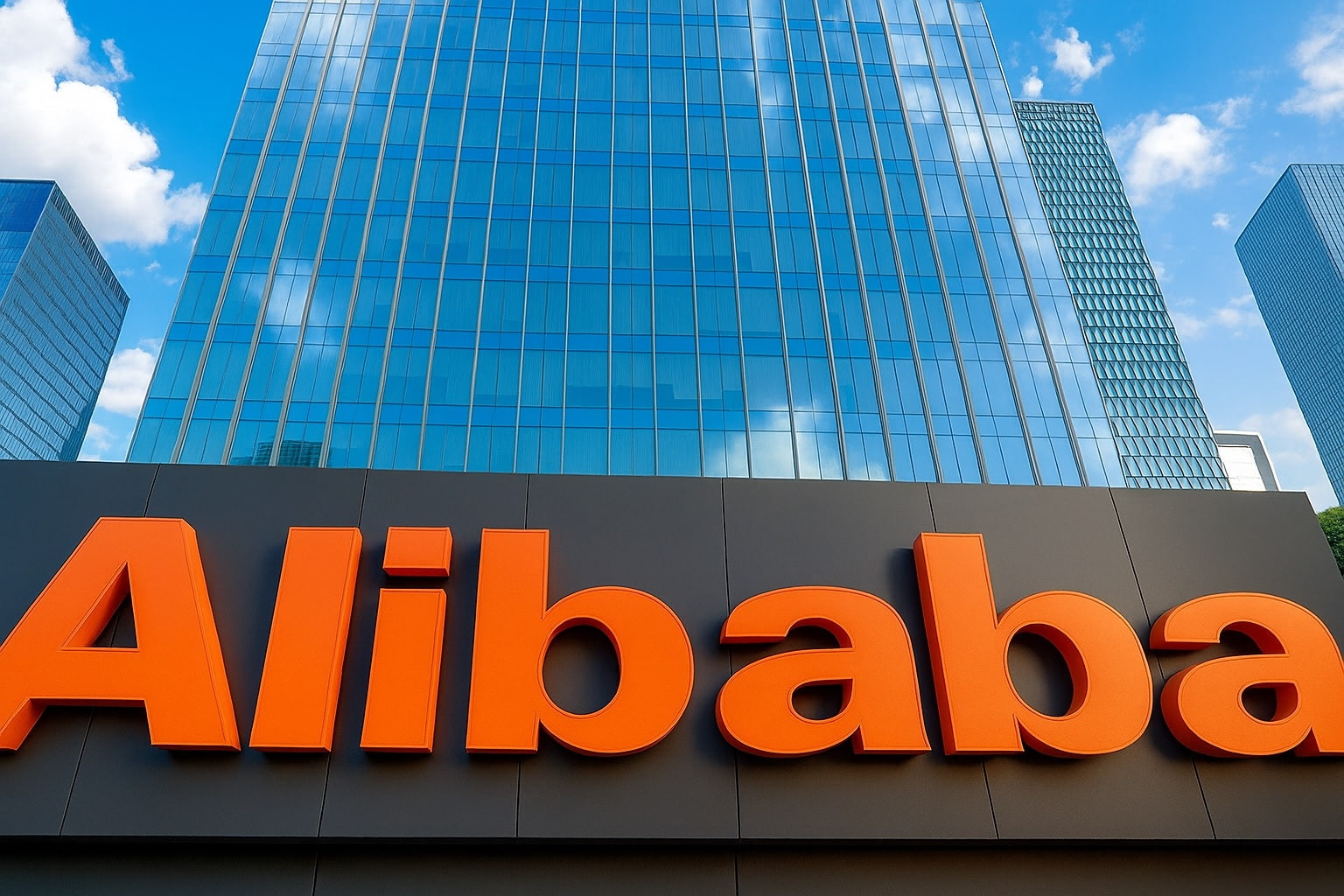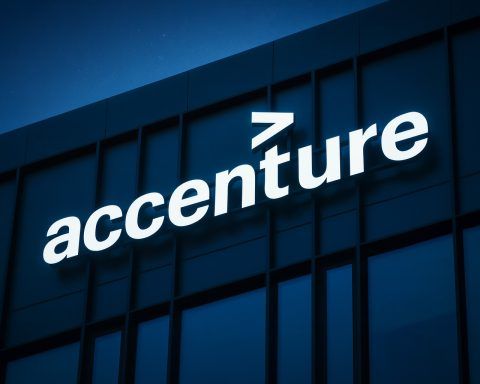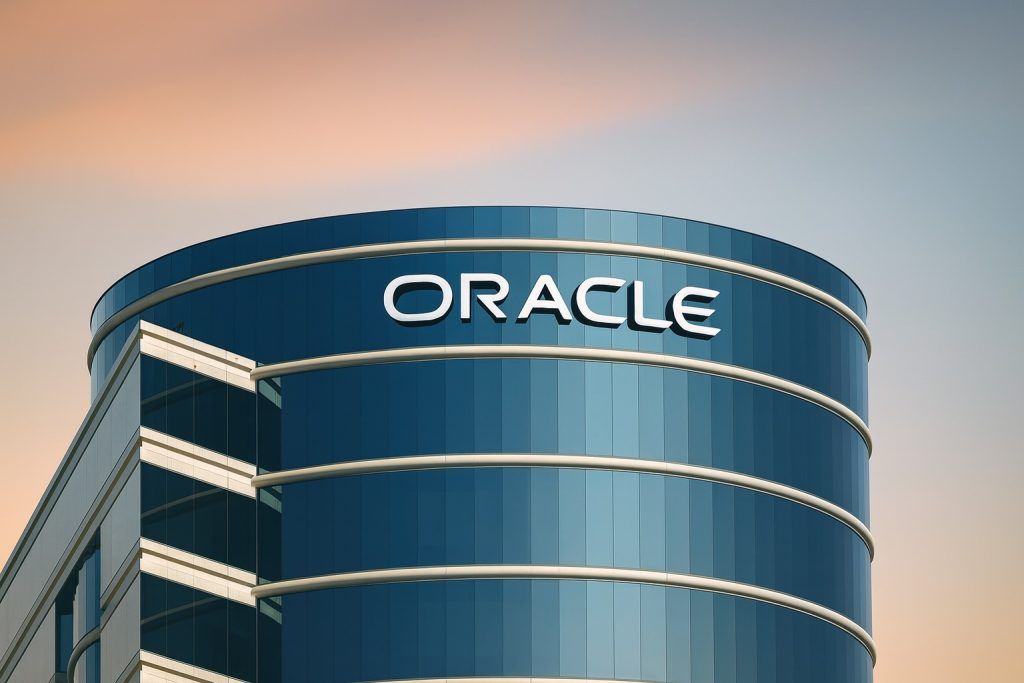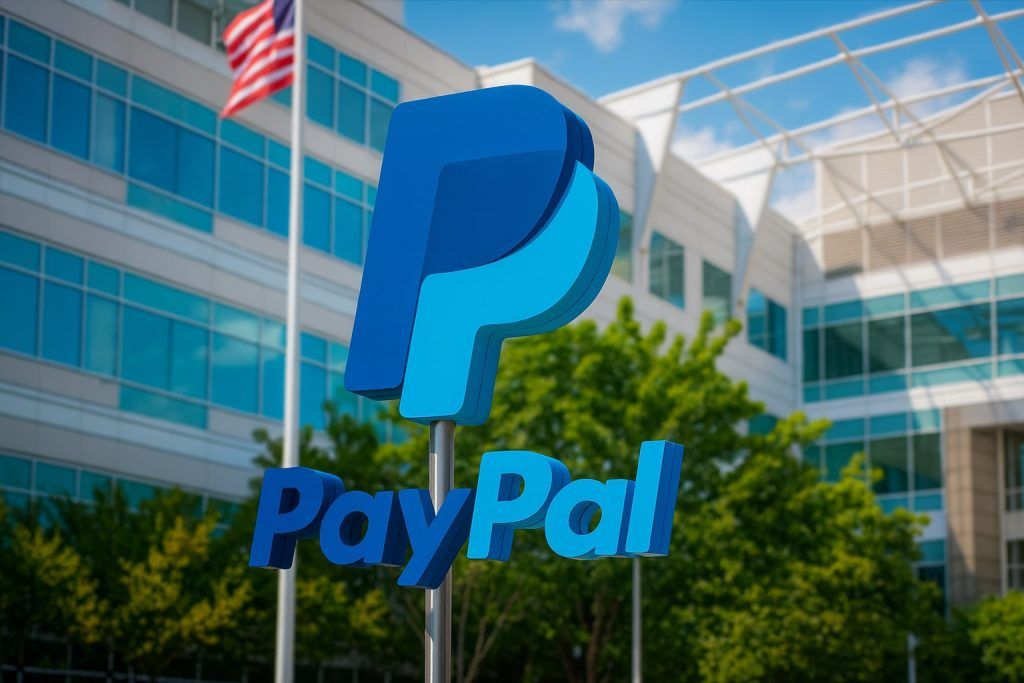Alibaba’s U.S.-listed shares head into Monday’s session at a critical crossroads: the stock has ridden a year-long AI-fueled rally, but is now digesting fresh U.S. national‑security allegations and softer consumer headlines out of China — just days before its next earnings report.
Below is a detailed, news-driven look at what BABA investors will be watching before the bell on Monday, November 17, 2025.
Key takeaways before Monday’s open
- BABA closed the week around the mid‑$150s, down sharply from its recent near‑$190 multi‑year high after a White House memo alleged the company provided tech support and data to China’s military — claims Alibaba strongly denies. [1]
- Earnings are next week: Alibaba will report September‑quarter 2025 results before the U.S. market opens on Tuesday, November 25, making this the final full week of trading before fresh numbers hit the tape. [2]
- AI remains the key bull story: the company is overhauling its consumer AI app (rebranding Tongyi to “Qwen”) and has committed to at least 380 billion yuan (over $50 billion) in AI and cloud infrastructure spending over three years. [3]
- Macro and regulatory risks are front and center: slower Singles’ Day growth, renewed U.S.–China tensions, and a new securities‑class‑action investigation have all helped inject fresh volatility into BABA shares. [4]
1. Where BABA stock stands after a turbulent week
Heading into Monday, Alibaba’s American Depositary Receipts (ADRs) are trading in the low‑ to mid‑$150s. Data from multiple quote sources show the stock recently changing hands around $153–154, down roughly 3–4% on the day after the latest national‑security headlines. [5]
Key snapshot metrics as of the latest close: [6]
- Recent price: ~$153–154 per share
- 52‑week range: roughly $80 to $193, highlighting how dramatic the recovery has been from 2023–2024 lows
- Market cap: around $270–$400 billion, depending on the specific quote source and timing
- Valuation: trailing P/E around 17–18, with a forward P/E near 19–20, according to MarketBeat’s compilation of consensus estimates. [7]
Several research and data providers estimate Alibaba’s earnings to grow in the high teens next year, with forecasts moving from roughly $7.9 to $9.3 in EPS, implying double‑digit profit growth if management executes. [8]
Importantly, BABA is still well above its 52‑week low despite the pullback, but has given back a chunk of gains since notching a four‑year high after its AI spending announcements in late September. [9]
2. The White House memo that knocked BABA lower
The dominant near‑term story is political, not operational.
According to reporting from the Financial Times and Reuters, a White House national‑security memo based on declassified intelligence alleges that Alibaba has: [10]
- Provided cloud computing and AI‑related services to units of China’s People’s Liberation Army (PLA)
- Shared sensitive user data (such as IP addresses and payment records) with Chinese authorities
- Passed along knowledge of undisclosed software vulnerabilities (“zero‑day” exploits) that could help cyber operations
While the memo does not spell out specific U.S. targets or announce concrete sanctions or enforcement actions, the political symbolism is huge. Reports say Alibaba’s U.S.-traded shares fell roughly 4–5% intraday when the news hit on November 14, with follow‑through selling on subsequent sessions. [11]
Why this matters for BABA stock
For investors, the risks cluster in three areas:
- Regulatory & sanctions risk
- Lawmakers have already used the memo to renew calls to restrict Chinese tech firms’ access to U.S. capital markets, including ideas like tighter listing standards or even potential delistings over national‑security concerns. [12]
- Even if no immediate action is announced, the overhang can compress valuation multiples as investors price in a higher geopolitical risk premium.
- Reputational damage
- For multinational enterprise cloud customers and Western partners, being tied to alleged PLA cyber operations is a serious reputational issue.
- Negative headlines can make it harder for Alibaba to win or retain cross‑border deals, particularly in sensitive industries like finance, telecom, and defense‑adjacent sectors. [13]
- Litigation exposure
- Investor‑rights firm Rosen Law has launched an investigation into whether Alibaba made materially misleading statements to the market in light of these allegations, laying groundwork for a potential securities class‑action lawsuit. [14]
None of this means a specific regulatory outcome is guaranteed, but it does explain why BABA’s recent pullback has been sharper than broader market moves despite solid fundamental trends. [15]
3. Alibaba’s response: ‘completely false’ and ‘malicious’
Alibaba has pushed back aggressively. In statements relayed through Chinese and international media, the company has: [16]
- Called the allegations “completely false” and “malicious”
- Questioned the timing of the leak, which came shortly after a tentative trade truce between the U.S. and China
- Emphasized its compliance with data‑protection laws and denied providing support for military cyber operations
Chinese media and officials have likewise framed the memo as a politically motivated move aimed at undermining improving U.S.–China relations, while U.S. security experts argue the case shows why Washington is increasingly wary of Chinese cloud and AI providers. [17]
For markets, the key point is not who’s “right,” but that the headline risk is unlikely to disappear quickly. Investors heading into Monday’s open will be gauging whether further leaks, Congressional statements, or regulatory comments emerge before earnings on November 25. [18]
4. AI remains the core bull case: Qwen app overhaul and massive capex
Even amid the political storm, Alibaba is moving aggressively to rebrand itself as a top‑tier AI infrastructure and applications play.
Qwen consumer app overhaul
Several reports from Bloomberg and other outlets say Alibaba will: [19]
- Rebrand its “Tongyi” mobile AI assistant on iOS and Android to “Qwen”, matching the name of its large language model family
- Add more ChatGPT‑style conversational and autonomous “agentic” features, designed to help users search, shop, and complete tasks inside apps like Taobao
- Dedicate 100+ engineers to the overhaul, turning Qwen into a full‑stack AI agent plugged directly into Alibaba’s e‑commerce ecosystem [20]
News of the Qwen revamp triggered a pre‑memo rally: BABA reportedly jumped about 4% in pre‑market trading on November 13 as investors bet on new monetization angles from AI‑powered shopping, advertising, and search. [21]
A three‑year, 380‑billion‑yuan AI and cloud build‑out
At the infrastructure level, Alibaba has made one of the largest AI investment commitments by any Chinese company: [22]
- Management plans to spend at least 380 billion yuan (≈$53B) over three years on data centers, AI chips, and cloud services
- Recent commentary suggests they may exceed even that figure as demand for AI workloads grows
- The stock hit its highest level in nearly four years in late September after the company signaled it would lift AI spending beyond its earlier guidance
Complementary initiatives include AI‑powered products like Quark AI smart glasses and assistant features that combine search and chat, launched around the Singles’ Day shopping festival. [23]
For Monday’s open, traders will be asking whether the national‑security selloff represents a short‑term shakeout in a longer AI‑driven uptrend — or the start of a deeper re‑rating as political risk gets baked into valuations.
5. Singles’ Day 2025: what it says about Alibaba’s e‑commerce engine
Alibaba’s core business is still commerce, and Singles’ Day (November 11) remains the biggest stress test for that engine.
Research from eMarketer and other firms indicates that 2025’s Singles’ Day season delivered solid but decelerating growth: [24]
- Overall transactions across Chinese e‑commerce platforms rose about 14–17.5% year over year to roughly 1.7 trillion yuan (≈$240B)
- Alibaba held an estimated 55% share of Singles’ Day gross merchandise value (GMV), with JD.com at 29% and Pinduoduo around 6%
- Retail sales for the period in China grew just 3% YoY, down from 4.5% a year earlier, reinforcing worries about a cautious consumer backdrop
However, growth is being stretched across a longer campaign (up to 27–37 days of promotions), which boosts total GMV but reduces daily intensity. Alibaba reportedly handed out an “unprecedented” 50 billion yuan in vouchers to its 88VIP members, which could support volumes but pressure margins. [25]
Notably, Alibaba has not released detailed GMV figures for this Singles’ Day, preferring qualitative metrics like VIP engagement — a trend that has persisted in recent years. [26]
For BABA stock, the takeaway is nuanced:
- The e‑commerce engine is still growing, but
- Margin pressure and muted Chinese consumer sentiment mean investors are increasingly focused on cloud and AI as the main profit and re‑rating drivers. [27]
6. Fundamentals heading into the November 25 earnings release
While the PLA memo is new, the medium‑term earnings picture hasn’t dramatically changed in the last few days.
Recent financial performance
Analysts summarizing Alibaba’s fiscal 2025 report highlight: [28]
- Revenue growth around 6% year over year to nearly RMB 1 trillion (≈$137B)
- Core China e‑commerce customer‑management revenue up about 12%
- Cloud Intelligence revenue accelerating to high‑teens growth (around 18–26% YoY depending on the quarter)
- AI‑related products delivering triple‑digit growth for multiple consecutive quarters
In its most recent reported quarter (February 20, 2025), Alibaba: [29]
- Posted EPS of $2.77 vs. $2.84 expected, a small miss
- Beat on revenue with $38.38B vs. $38.19B expected
- Maintained a trailing P/E of about 17.9 and projected earnings growth in the high teens for the next year
Third‑party analysis suggests operating profit is increasingly concentrated in China e‑commerce and cloud, with the cloud division growing revenue around 25–30% annually and AI already contributing more than 20% of external cloud customer revenue. [30]
Upcoming September quarter (to be reported Nov. 25)
Alibaba has confirmed it will report unaudited financial results for the quarter ended September 30, 2025 before the U.S. market opens on Tuesday, November 25, with a conference call at 7:30 a.m. ET. [31]
MarketBeat and other calendar services treat this as fiscal Q2 2026 (September quarter) and show consensus expectations in the mid‑$2s per share for EPS, with mid‑single‑digit revenue growth. [32]
Going into the print, investors will be focused on:
- Cloud growth and AI monetization
- Management’s commentary on the White House memo and geopolitical risk
- Updates on Singles’ Day performance and consumer trends
- Signals on share repurchases and capital returns
7. Capital allocation: buybacks and convertible notes
Alibaba has been trying to support its stock through both buybacks and capital‑markets flexibility.
Ongoing share repurchase program
In an October 2 update, Alibaba said that in the quarter ended September 30, 2025 it: [33]
- Repurchased 17 million ordinary shares (≈2 million ADSs) in the U.S. market
- Spent $241 million on those buybacks
- Reduced net shares outstanding slightly, by about 0.02% after accounting for stock‑based compensation
- Still had $19.1 billion remaining under its board‑authorized repurchase program, which runs through March 2027
While the reduction in share count is modest so far, the sizable remaining authorization gives management optionality to step up buybacks if they want to signal confidence during periods of volatility.
$3.2B zero‑coupon convert with high conversion price
On September 17, Alibaba completed an offering of about $3.2 billion in Zero Coupon Convertible Senior Notes due 2032, primarily to non‑U.S. investors. [34]
Key details: [35]
- Initial conversion price: $193.15 per ADS, about 31% above the reference share price at pricing
- Alibaba also purchased capped call options that effectively raise the economic conversion level to $235.46 per ADS, roughly 60% above the reference price
Structurally, that means dilution only kicks in if the stock trades far above current levels, and even then the capped calls soften the impact. For equity holders, it is a signal that management is willing to borrow cheaply against a higher future share price, using proceeds to fund cloud and international expansion.
8. Analyst sentiment and valuation debate
Despite the recent sell‑off, Wall Street remains broadly positive on BABA:
- Market data from several platforms show a consensus “Buy” or “Strong Buy” rating, with dozens of buy ratings and very few sells. [36]
- TipRanks, for example, lists 19 Buy and 2 Hold ratings, with an average price target around $198, implying mid‑20% upside from recent levels. [37]
- Some bullish research shops and trading‑oriented outlets float fair‑value estimates in the $180–$250 range, based on assumptions of high‑teens EPS growth out to 2027 and premium multiples for AI and cloud. [38]
At the same time, fundamental screens like Simply Wall St note that, depending on the model, Alibaba’s current price can already discount a healthy chunk of that growth: their fair‑value framework recently estimated roughly 6% top‑line growth and ~14% compound annual revenue expansion, with BABA trading at a mid‑teens P/E relative to those expectations. [39]
The spread between bullish and cautious views largely comes down to:
- How durable AI and cloud growth will be
- How much risk premium markets should assign for China macro and U.S. political risk
- Whether Singles’ Day and broader retail trends point to a slow‑growth “new normal” for domestic e‑commerce
For Monday’s session, traders may be especially sensitive to any fresh analyst upgrades or downgrades and to options activity that might signal positioning ahead of the November 25 earnings call. [40]
9. China’s macro backdrop: a steady headwind
Even without the White House memo, China’s economy has been a recurring concern for BABA shareholders.
Recent retail and Singles’ Day data underline: [41]
- Retail sales growth in China has slowed to about 3% year over year in the Singles’ Day period, down from 4.5% the year before
- Youth unemployment and a persistent property slump continue to weigh on consumer confidence
- E‑commerce platforms have been forced into heavy discounting and subsidy campaigns, which support GMV but can erode profitability
Alibaba’s long‑term thesis — that commerce, cloud, and AI will offset cyclical weakness — depends on its ability to extract margin from this environment, not just chase GMV at any price.
That’s one reason investors will parse Monday’s pre‑market commentary and any weekend headlines very closely: any sign of additional stimulus, regulatory easing, or policy support for domestic tech and consumer platforms can quickly shift sentiment, just as renewed tensions or regulatory crackdowns can do the opposite. [42]
10. What to watch when trading opens on November 17, 2025
Putting it all together, here are the main storylines likely to guide BABA trading as the market opens Monday:
- Headline risk vs. relief rallies
- Does the news cycle around the White House memo escalate or cool over the weekend?
- Any new comments from U.S. agencies, lawmakers, or Alibaba itself could move the stock quickly. [43]
- Positioning ahead of earnings
- With results due on November 25 before the bell, some investors may treat dips as opportunities to position for an upside surprise — especially given how heavily expectations have been reset in recent months. [44]
- AI and cloud narrative vs. security overhang
- Positive AI headlines (Qwen rollout details, new AI customers, or additional partnerships) could help re‑anchor the story on growth.
- But any indication that U.S. or European customers are reconsidering Alibaba cloud contracts due to security concerns would be a major red flag. [45]
- China macro data and Singles’ Day read‑throughs
- Further analysis of Singles’ Day performance or new macro data releases this week could reinforce either the cautious or optimistic case for China‑exposed names. [46]
- Liquidity, buybacks, and technical levels
Bottom line
Before the market opens on November 17, 2025, BABA sits at the intersection of powerful AI and cloud growth drivers and heightened geopolitical, regulatory, and macro risks.
- Bulls will point to a mid‑teens earnings multiple, multi‑year AI capex plan, strong cloud momentum, and an enormous domestic commerce franchise backed by ongoing buybacks. [49]
- Bears will highlight the new national‑security allegations, ongoing U.S.–China tech tensions, legal‑action headlines, and a Chinese consumer still spending cautiously. [50]
For any investor or trader considering BABA around Monday’s open, it’s crucial to:
- Separate company fundamentals from country and policy risk
- Understand that headline‑driven volatility may remain elevated into and beyond the November 25 earnings report
- Align any position size and time horizon with your own risk tolerance and diversified portfolio strategy
This article is for information and news purposes only and does not constitute financial or investment advice. Always do your own research or consult a licensed financial adviser before making trading or investment decisions.
References
1. markets.businessinsider.com, 2. www.alibabagroup.com, 3. www.bloomberg.com, 4. www.emarketer.com, 5. markets.businessinsider.com, 6. markets.businessinsider.com, 7. www.marketbeat.com, 8. www.marketbeat.com, 9. www.fxstreet.com, 10. www.reuters.com, 11. www.reuters.com, 12. www.ft.com, 13. finance.yahoo.com, 14. www.businesswire.com, 15. www.xtb.com, 16. www.scmp.com, 17. www.scmp.com, 18. finance.yahoo.com, 19. www.bloomberg.com, 20. cryptorank.io, 21. www.gurufocus.com, 22. www.fxstreet.com, 23. www.barrons.com, 24. www.emarketer.com, 25. www.emarketer.com, 26. stocktwits.com, 27. www.emarketer.com, 28. www.marketbeat.com, 29. www.marketbeat.com, 30. www.tradingnews.com, 31. www.alibabagroup.com, 32. www.marketbeat.com, 33. www.alibabagroup.com, 34. www.alibabagroup.com, 35. www.alibabagroup.com, 36. markets.businessinsider.com, 37. www.tipranks.com, 38. www.tradingnews.com, 39. simplywall.st, 40. www.tipranks.com, 41. www.emarketer.com, 42. www.emarketer.com, 43. www.reuters.com, 44. www.alibabagroup.com, 45. www.bloomberg.com, 46. www.emarketer.com, 47. www.alibabagroup.com, 48. www.tradingnews.com, 49. www.fxstreet.com, 50. www.ft.com







